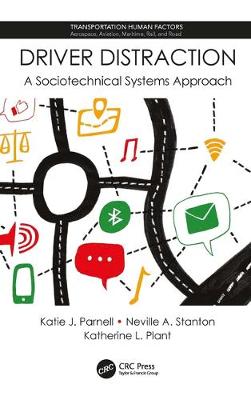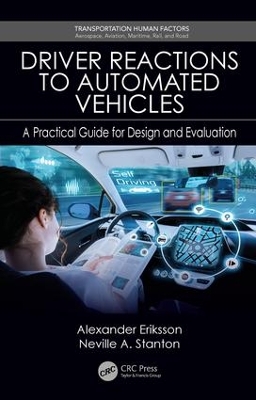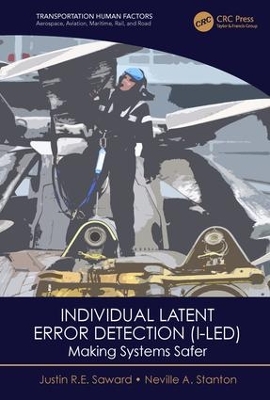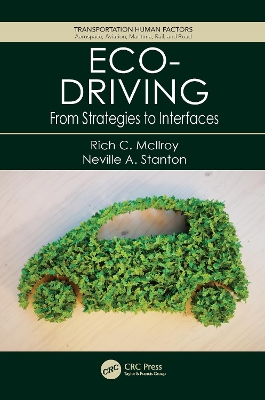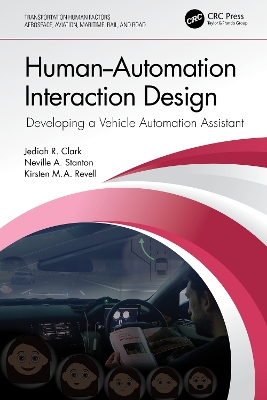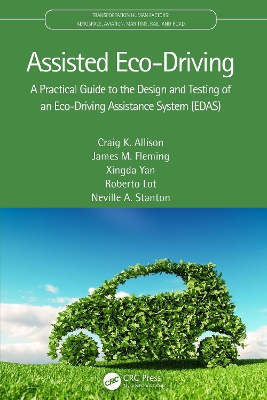Transportation Human Factors
7 total works
Driver Distraction
by Katie J. Parnell, Neville A. Stanton, and Katherine L. Plant
Driver Distraction: A Sociotechnical Systems Approach promotes a sociotechnical systems approach to driver distraction. This perspective focuses on analysis of the whole system, its values, and the interactions between human and technical elements at all organisational levels. The book covers the role that the sociotechnical system plays in the theory, study and mitigation of driver distraction. The book will be of interest to accident and incident investigation researchers and practitioners.
- Provides a review of the current state of driver distraction research
- Describes the development, application, and validation of a novel model of driver distraction that accounts for the sociotechnical system
- Discusses a new, systems-based, driver distraction definition
- Explains AcciMap analysis of the current legislation on driver distraction from technological devices
- Offers novel approaches to understanding why driver distraction occurs
- Presents a extensive framework of the causal factors that lead to distraction informed by drivers
Driver Reactions to Automated Vehicles
by Alexander Eriksson and Neville A. Stanton
Driver Reactions to Automated Vehicles focuses on the design and evaluation of the handover to and from driver and the automobile. The authors present evidence from studies in driving simulators and on the open roads to show that handover times are much longer than anticipated by previous research. In the course of the studies, Eriksson and Stanton develop compelling evidence to support the use of driving simulators for the study of handovers. They also develop guidelines for the design of handover strategies and show how this improves driver takeover of vehicle control.
Features
- Provides a history of automobile automation
- Offers a contemporary analysis of the state of automobile automation
- Includes novel approaches in examining driver-automation interaction
- Presents studies of automation in driving simulators
- Includes on-road studies of driver automation
- Covers guidelines for design of vehicle automation
Systems Thinking in Practice
by Neville A. Stanton, Paul Salmon, and Guy H. Walker
This book presents the latest developments of Systems Thinking in Practice to the analysis and design of complex sociotechnical systems. The Event Analysis of Systemic Teamwork (EAST) method is applied to micro, meso and macro systems. Written by experts in the field, this text covers a diverse range of domains, including: automation, aviation, energy grid distribution, military command and control, road and rail transportation, sports, and urban planning. Extensions to the EAST method are presented along with future directions for the approach.
- Illustrates a contemporary review of the status of Distributed Cognition (DCOG)
- Presents examples of the application of Event Analysis of Systemic Teamwork (EAST) method
- Presents examples of the application of Event Analysis of Systemic Teamwork (EAST) method
- Discusses the metrics for the examination of social, task, and information networks
- Provides comparison of alternative networks with implications for design of DCOG in systems
Individual Latent Error Detection (I-LED)
by Justin R.E. Saward and Neville A. Stanton
Undetected human error in aircraft maintenance creates a latent error condition that can contribute to undesirable outcomes. Individual Latent Error Detection (I-LED) acts as an additional system safety control that helps an engineer recall past errors through environmental cues. This book addresses a gap in the human factors research and current safety strategies by exploring the nature and extent of I-LED and its benefit to safety resilience. The book will describe the I-LED concept using a systems perspective and propose practical interventions to be integrated within existing safety systems as an additional control to enhance resilience against human performance variability.
- Provides a new view of total safety based on enhanced resilience provided through the integration of I-LED interventions within existing safety systems
- Offers an in-depth exploration of the phenomenon of spontaneous recall of past event, leading to error detection and recovery of latent error conditions
- Discusses the application of Human Factors methods to conduct real-world observations in maintenance environments
- Describes the application of the systems view of human error to applied research
- Presents cost versus benefit analysis of safety interventions targeting latent error conditions
Eco-driving has the potential to save fuel and reduce emissions without having to make any changes to vehicles or road infrastructure. This book provides an in-depth understanding of the contemporary issues in the human factors aspects of eco-driving strategies and interfaces and the effects on driver behaviour. A review of the literature concerning design, behaviour, and energy use led to an exploration of Ecological Interface Design, and the Skills, Rules, and Knowledge (SRK) taxonomy of human behaviour, particularly with regard to haptic information presented through the accelerator pedal. This book explains that eco-driving can be performed by anyone in control of a vehicle.
Human-Automation Interaction Design
by Jediah R. Clark, Neville A. Stanton, and Kirsten Revell
This text presents a four-step approach for applying communicative concepts to driving automation, including: scoping, piloting, designing, and testing. It further provides experimental data on how practical human-human communication strategies can be applied to interaction in automated vehicles.
The book explores the role of communication and the nature of situation awareness in automated vehicles to ensure safe and usable automated vehicle operation. It covers the issue of interaction in automated vehicles by providing insight into communicative concepts, the transfer of control in human-teams, and how these concepts can be applied in automated vehicles. The theoretical framework is built on by presenting experimental findings, design workshop output and providing a demonstration of prototype generation for automated assistants that addresses a wide range of performance outcomes within human-machine interaction.
Aimed at professionals, graduate students, and academic researchers in the fields of ergonomics, automotive engineering, transportation engineering, and human factors, this text:
- Discusses experimental findings on how practical human-human communication strategies can be applied to interaction in automated vehicles.
- Provides a four-step approach for applying communicative concepts to driving automation, including: scoping, piloting, designing and testing.
- Explores the role of distributed situation awareness in automated vehicles.
- Covers communication and system awareness in response to multiple complex road scenarios.
- Provides design guidelines for automation-human handover design.
Assisted Eco-Driving
by Craig K. Allison, James M Fleming, Xingd A. Yan, Roberto Lot, and Neville A. Stanton
This book discusses an integrative approach combining Human Factors expertise with Automotive Engineering. It develops an in-depth case study of designing a fuel-efficient driving intervention and offers an examination of an innovative study of feed-forward eco-driving advice.
Assisted Eco-Driving: A Practical Guide to the Design and Testing of an Eco-Driving Assistance System offers an examination of an innovative study of feed-forward eco-driving advice based on current vehicle and road environment status. It presents lessons, insights and utilises a documented scientific and research-led approach to designing novel speed advisory and fuel use minimisation systems suitable for combustion vehicles, hybrids and electric vehicles
The audience consists of system designers and those working with interfaces and interactions, UX, human factors and ergonomics and system engineering. Automotive academics, researchers, and practitioners will also find this book of interest.
